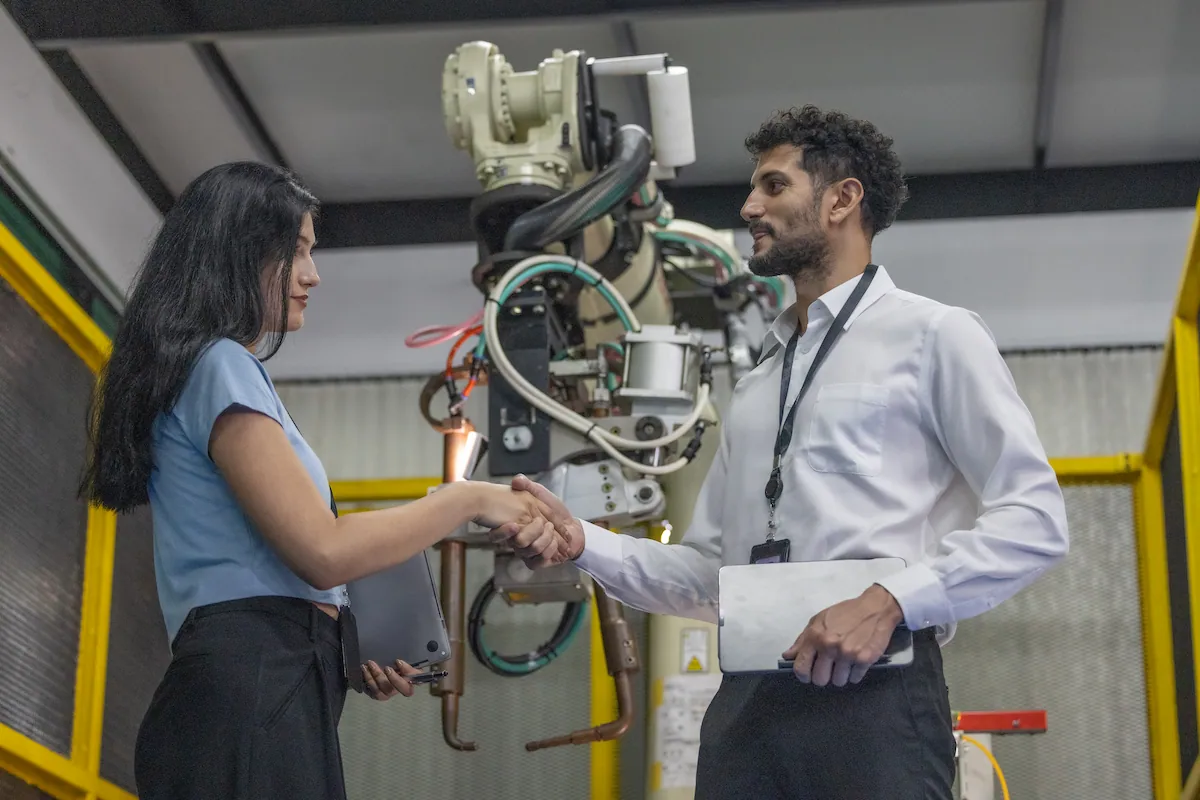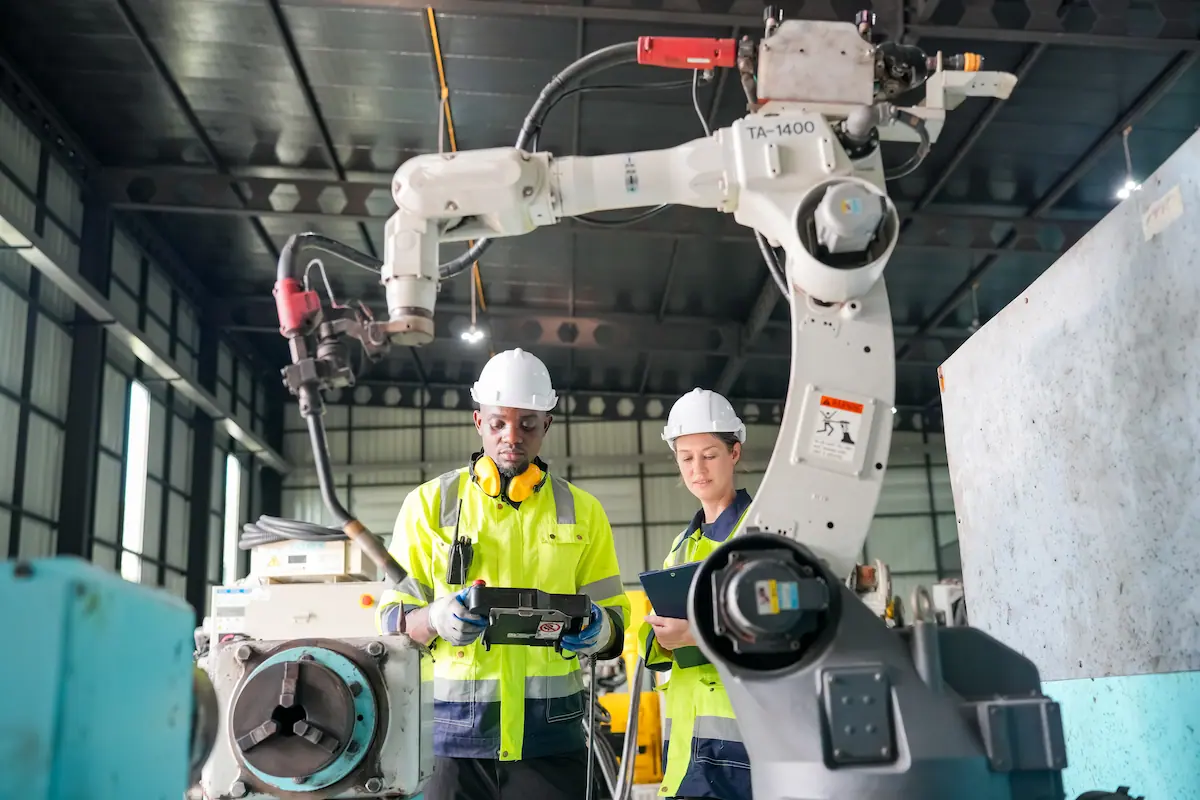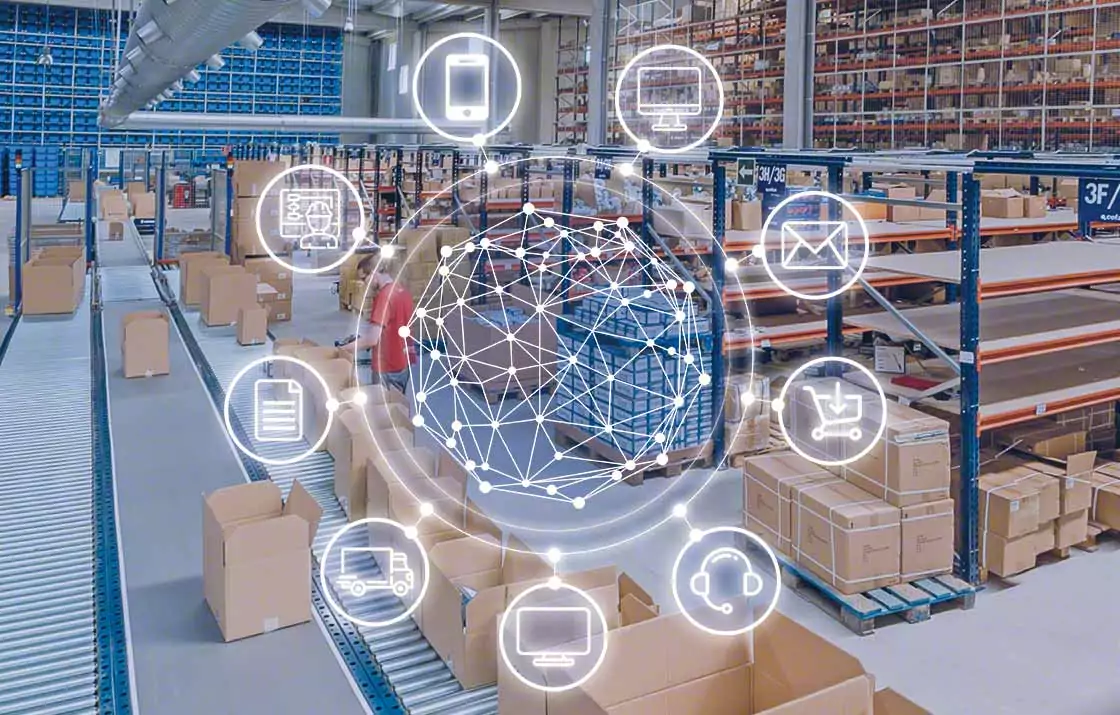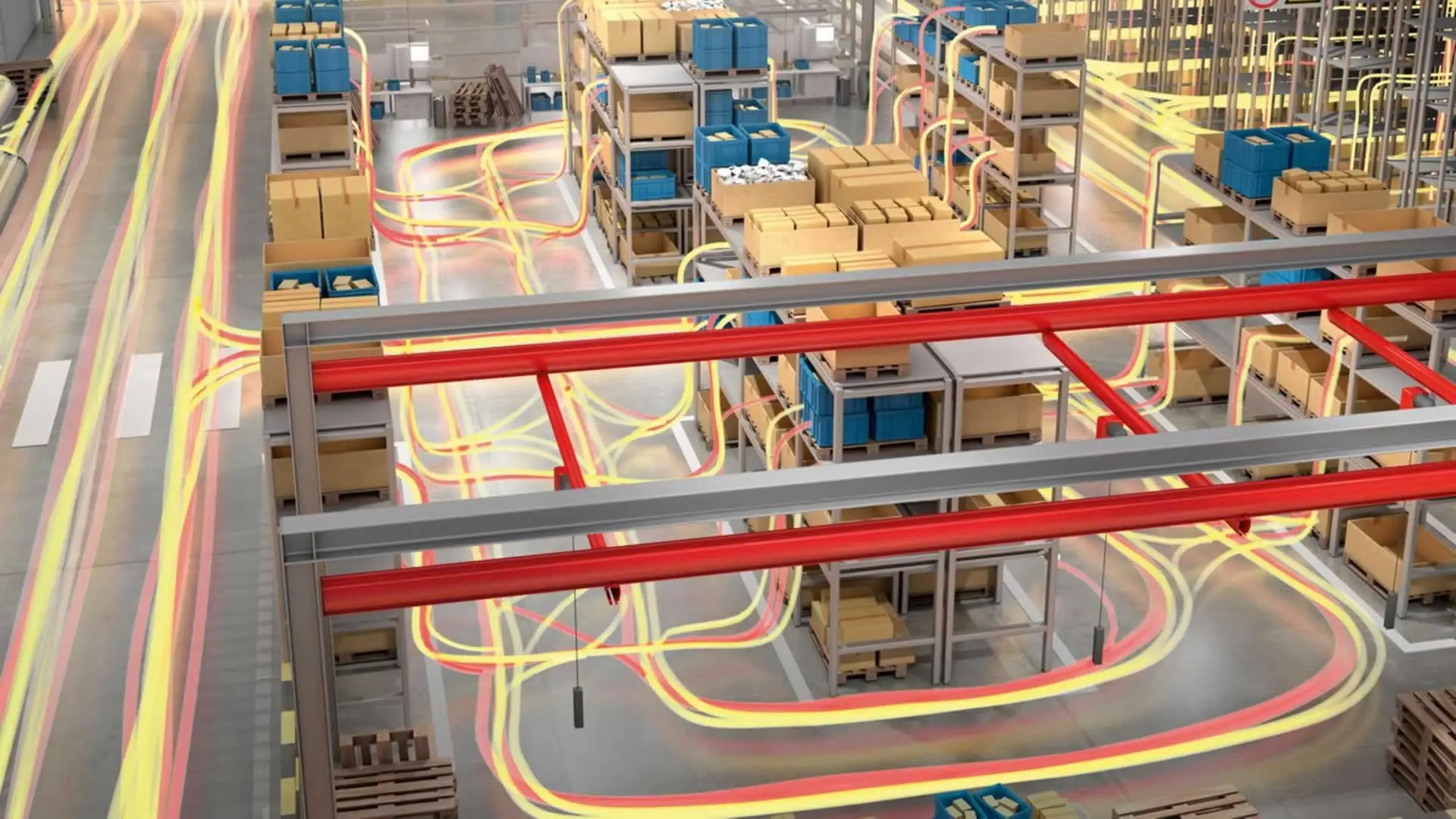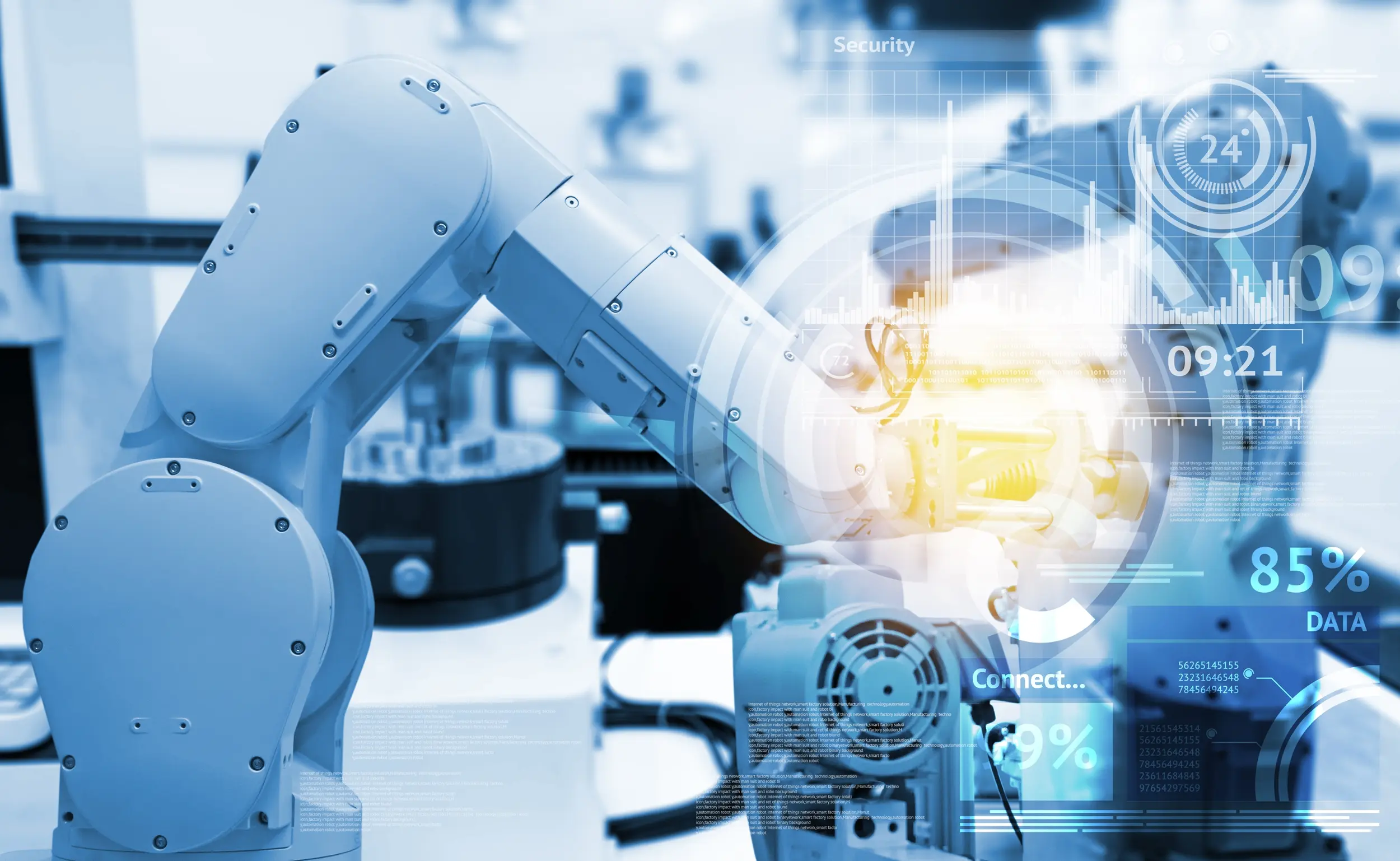Content index
ToggleIndustrial automation has revolutionised the way companies manage production and internal logistics. Today, thanks to advanced technologies, intralogistics has become a key element in improving efficiency, reducing costs and increasing safety in warehouses and production facilities. With increasing digitisation, the integration of automated solutions enables new levels of optimisation, drastically reducing errors and delays in material handling.
What is Intralogistics and Why is it Essential?
Intralogistics concerns the management of materials within a company, including the transport, storage, picking and internal distribution of components and finished products. In a world where speed and accuracy are paramount, optimising these processes means improving the entire production chain. The evolution of intralogistics is driven by the need to increase business competitiveness by reducing waste and improving workflow management.
An efficient intralogistics system makes it possible to:
- Reduce material handling time.
- Increasing the accuracy of order management.
- Minimising waste and losses.
- Improving safety in the workplace.
- Reduce dependence on labour and optimise human resources.
- Integrating artificial intelligence-based solutions for continuous improvement.
The adoption of automation in intralogistics is no longer a luxury, but a necessity to remain competitive in the modern market.ù
Key Technologies for Intralogistics Automation
Automated Guided Vehicles (AGV) and Autonomous Mobile Robots (AMR)
The AGVs (Automated Guided Vehicles) are autonomous vehicles that follow predefined routes within warehouses and factories. They are ideal for environments with repetitive operations and well-defined layouts. They use various guidance systems, including magnetic cables, lasers or cameras, and are perfect for transporting materials between work stations without human intervention.
The AMR (Autonomous Mobile Robots) represent a more advanced evolution: they use intelligent sensors, machine vision and artificial intelligence to move autonomously, avoiding obstacles and optimising material transport routes. Due to their adaptability, AMRs are particularly useful in environments with dynamic logistical needs, allowing for greater flexibility than traditional AGVs. Furthermore, AMR robots can collaborate with other automated systems, such as robotic arms and warehouse management software, to further optimise internal logistics.
The combined use of AGVs and AMRs improves operational efficiency and reduces the risk of human error. Furthermore, these systems are scalable and can be easily integrated into existing industrial environments, reducing the need for significant structural changes.
Automated Storage and Retrieval Systems (AS/RS)
THE AS/RS (Automated Storage and Retrieval Systems) are automated warehouse facilities using stacker cranes and shuttles for the storage and retrieval of materials.
These systems allow
- Exploiting space at height, reducing the occupied area.
- Increase picking and storage speed.
- Eliminate human errors in picking and inventory management.
- Optimise workflows while improving overall productivity.
AS/RS can be divided into different types, including shuttle systems, stacker crane systems and mini-load solutions. Shuttle systems are particularly effective for handling small packages and boxes, while stacker cranes are more suitable for handling pallets and heavy loads.
The integration of AS/RS with advanced management software reduces downtime, improves stock rotation and ensures more accurate inventory management. In addition, these systems reduce the need for manual movements, improving worker safety and minimising the risk of accidents at work.
Conveyor and Sorter: Intelligent Handling and Sorting
THE conveyor (conveyor belts) and the sorter (sorting systems) are key to speeding up the movement of products through the different production and warehouse areas. These systems can be integrated with scanners and RFID to track every movement in real time, improving traceability and order management efficiency.
RFID and IoT: Real-Time Monitoring
The use of RFID (Radio Frequency Identification) and devices IoT (Internet of Things) allows materials to be tracked with extreme accuracy, optimising inventory control and reducing the risk of loss or errors. Connecting IoT devices also enables real-time data collection and analysis, identifying inefficiencies and anticipating problems before they occur.
WMS and MES Software: The Brain of Internal Logistics
The WMS (Warehouse Management System) is software designed to optimise warehouse management by automating operations such as storage, picking, inventory and product tracking. Using sophisticated algorithms, the WMS improves the accuracy and speed of operations, reducing errors and increasing overall warehouse efficiency.
The MES (Manufacturing Execution System), on the other hand, is a dedicated production management software that coordinates the procurement of materials between different production departments in real time, ensuring the correct workflow and reducing waste and downtime.
These two systems, when integrated, offer numerous advantages:
- Greater visibility and control: Companies can monitor every step of the logistics and production process in real time.
- Reducing waste: Optimal utilisation of resources leads to more efficient inventory management.
- Advanced tracking: The digital recording of each movement reduces the risk of errors and losses.
Data-driven strategic decisions: The analysis of the information gathered enables continuous process improvement and optimisation of the supply chain.
Success Story: Amazon and Intralogistics Automation
A concrete example of success in intralogistics automation is Amazonthe e-commerce giant. Amazon has implemented advanced robotic systems in its distribution centres, such as Kiva AMRs, which transport entire shelves to the operators, drastically reducing picking times. This approach has enabled Amazon to improve warehouse management, increase the speed of deliveries and reduce operating costs.
Through the use of artificial intelligence, mobile robots and advanced software, Amazon has created a highly efficient logistics ecosystem that is a model for many other companies.
Advantages of Automation in Intralogistics
- Operational efficiency: reduced handling time.
- Reduction of errors: greater accuracy in material handling.
- Better use of space: optimised storage systems.
- Increased safety: less exposure of workers to risks.
- Scalability: solutions that can be expanded according to business needs.
- Real-time monitoring: greater visibility of logistics operations.
- Sustainability: reducing waste and optimising energy consumption.
The Future of Intralogistics is Automation
Intralogistics automation is not just a trend, but a necessity to remain competitive in an increasingly demanding market. Companies that invest in these solutions improve productivity, efficiency and security.If you want to optimise your company's internal logistics and take it to the next level, TOD SYSTEM SRL is the right partner for you. Contact us for a personal consultation and find out how we can transform your intralogistics!

